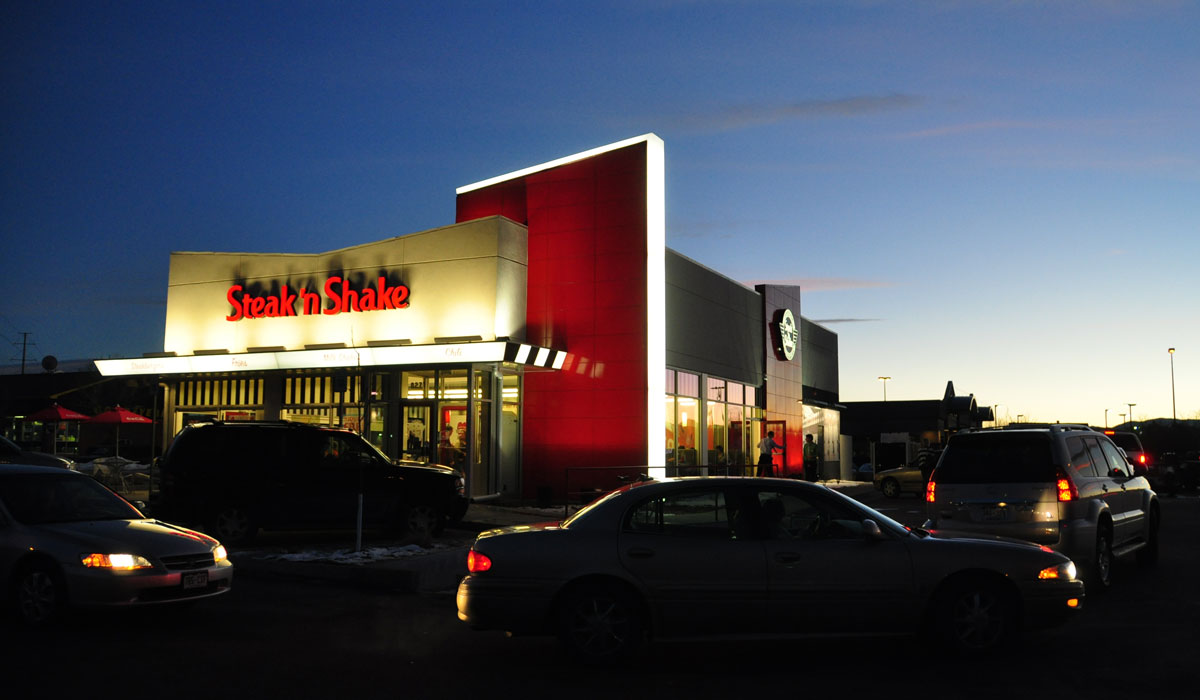Steak ‘n Shake’s refranchising efforts are not moving quickly, which means a large portion of its overall footprint remains “temporarily” closed, the company’s third-quarter report showed. As of September 30, a total of 106 restaurants were shut down as Biglari Holdings actively works to “identify franchise partners for these stores.”
While the goal remains to reopen them, there’s no hard timetable or benchmark. “Although the company is committed to the franchise partnership model, future impairments are possible,” it said.
The figure is not a big change from Q2, when Steak ‘n Shake upped closures to 103 restaurants from 44 in the previous period. But it means the classic brand, founded 1934 in Normal, Illinois, has missed a significant chunk of its system for much of the fiscal calendar, and it’s taking a toll on the bottom line. On December 31, 2018, the brand had 413 company-run restaurants and 213 franchises. Today, there are 302 corporate stores and 217 franchises. So, 626 versus 519. This includes the permanent closure of five company locations. Steak ‘n Shake shuttered 111 corporate units this year alone, more than a quarter of the restaurants it ran to start 2019.
READ MORE: What’s going wrong at Steak ‘n Shake?
The chain lost $861,000 in Q3, less than Q3 2018’s $3.2 million. However, for the first nine months of the year, Steak ‘n Shake is down $22.776 million versus $1.5 million in the comparable period.
Last year, for the first time since 2008, restaurants took a loss in operating earnings at $25.8 (in dollars in 000s). As a company, the figure was negative $10,657. It was negative $30,754 in 2008 before trending positive year-over-year until 2018.
The temporary closures also dropped Q3 net sales to $136,651, a decrease of $49,717. Measure it across the first nine months of the year and Steak ‘n Shake’s result is $454,344—a sizable difference of $109,392 compared to the year-ago period.
While this is happening, Steak ‘n Shake’s current base is struggling to generate momentum as well. Q3 Same-store sales fell 6.5 percent, year-over-year, as traffic plummeted 13.3 percent. So far this year, the brand’s comps are tracking negative 6.4 percent, with traffic approaching a double-digit sink at 9.7 percent. This concerns company-run restaurants open at least 18 months, providing a glimpse into why Steak ‘n Shake is so eager to refranchise mature, in-house units.
To date, 101 of the closures have not reopened. Roughly 1 percent of its 400 corporate stores have been refranchised.
Steak ‘n Shake’s refranchising program started, in terms of announcements, last August. The company said it wanted to build a system of single-unit, operator-run stores in an effort to foster a more entrepreneurial-driven culture. Essentially, it hoped to follow in Chick-fil-A’s footsteps—create a collective of restaurants run as though they’re each individual units, not cogs in a multi-unit system that don’t get the attention they might need. To get there, Steak ‘n Shake said it would offer restaurants for $10,000, but charge the owner up to 15 percent of sales to lease the unit and equipment, and require them to split the profit.
CEO Sardar Biglari put it as follows: “entrepreneurs with a consummate commitment to the business.” In other terms, a method to avoid absentee owners and improve customer service concerns sagging the system.
Steak ‘n Shake acted boldly as trends deteriorated. The brand’s customer counts slipped downward from 116 million to 111 million to 103 million—its lowest mark in eight years, heading into 2019. Same-store sales have now declined for 12 straight quarters. Comps fell 5.1 percent in 2018 after sliding 1.8 percent and 0.4 percent in the previous two years.
Steak ‘n Shake opened eight franchise units and closed four during Q3.
The brand has cut back costs in a few areas over the past year, too. Marketing in Q3 ran $7,565, or 5.2 percent of total revenues. It’s $30,811 (6.4 percent) for the first nine months. That compares to $13,757 (7.1 percent) and $39,436 (6.7 percent), respectively. Steak ‘n Shake said the decrease was primarily due to a reduction in TV and print advertising.
The company’s Q3 G&A expenses were also $10,907 compared to $14,985 last year. The company credited this to a “reduction in personnel.”
Additionally, operating costs came in at $69,222 (50.7 percent of net sales) in Q3 versus $100,393. The culprit: Improved efficiency in labor.
Biglari Holdings, which also runs 54 Western Sizzlin locations (50 franchised), saw its total revenue drop 26 percent, or $50 million, to $145.1 million. Western Sizzlin contributed $3.8 million.
Steak ‘n Shake’s aim to refranchise comes as its operating model shifts. Biglari said last year the company’s aggressive pricing formula hadn’t evolved with a changing customer preference. Simply, the brand was missing the convenience boat.
The company said it would work to improve production and speed of service and capture more visits where its guest was headed—drive thru and take-out revenue rose 51.5 percent in the past decade.
Steak ‘n Shake’s company’s units were all sit-down models for the first 78 years. The counter-service format arrived 2012. It grew through universities, casinos, airports, gas stations, shopping centers, and other nontraditional outlets. By the end of 2018, there were 87 quick-service locations—including international operations.
Steak ‘n Shake started pushing franchising in 2010. There were 71 franchised stores that year and 213 by 2019. The program began officially in 1939 but grew by an average of just one franchise per year from 1939 to 2010. Over the next eight years, current management added twice the number of franchise units (142) than had been built in the preceding 71 years.
The owners took over on August 5, 2008. Biglari has said before the company was losing $100,000 per day but was generating that much by the end of 2009.







